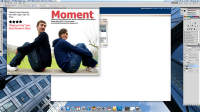Throughout my whole A2 project I have definitely realised the importance of audience feedback. I feel this year that I have used my target audience to create a much more effective piece of work.
Having the use of Web 2.0 has improved my questionnaire techniques dramatically, I used google docs to enable me to send my questionnaire out via the facebook and blogger group. I have evaluated google docs as a programme itself in my "
The use of media technology in the pre- production stage" post. As well as using google docs I also received feedback from facebook and youtube as we allowed our viewers to comment on the video and ancillary tasks.
Our target audience is based mainly around the ages of 16-20, choosing this age group allowed us to publish our questionnaire on Facebook and our Blogger page. Millions of people all over the world use facebook and the majority of people in this age range would have a wide knowledge of the internet so would find it very easy to answer our questionnaire. This proved useful as it means more people were willing to do our questionnaire as it wasn't a hard, time consuming task.
Our comments overall have been very positive and also provided us with a lot of useful feedback. We made a lot of changes throughout our project and it was here I felt the full impact of how helpful and essential audience feedback is.
We collected a lot of feedback throughout the whole process of our production, you can see how much our work has developed from this initial '
Test Filming'. We found that the audience picked up on a lot of our editing faults and the shots simply didn't follow. I have analysed this in my '
Test film Analysis' post. We found from our audience feedback that our target audience enjoyed the idea of having dream moments in our final edit, although we have made a lot of changes since this point the original concept is still included. Another major factor we changed was taking out the original dialogue, this enabled our editing to run much smoother, we also found that our target audience didn't associate any dialogue with a short film so was essential that we removed it.
Our final feedback was again collected through the use of google docs and again posted on
facebook and our
blogger page. By clicking onto this
link you can see the questions posted to our target audience. We didn't receive as much feedback as i would have liked however it was enough to give a final conclusion to the project.
Here is a screenshot of some of the feedback:
One of the most difficult pieces of pre-production research was learning how to establish a genre into a short film, we therefore decided to focus on an emotion. As you can see from our final feedback everyone said that they felt happy and excited at the beginning but sad come the end. This gives me confidence that we have succeeded in portraying a clear and strong emotional message.
A lot of our important feedback about the short film and ancillary tasks came from a class discussion, we all had the opportunity to present our work to our teachers and classmates and then receive feedback on this. One of the most controversial points of feedback was about the ending of our short film, we had one teacher saying she liked the ending as it is as it allows the audience to make up their own mind on the ending, and the other teacher saying he found it too confusing. However after looking at all our audience feedback we collected we decided to stick to our final edit. This was mainly due to different people giving different ideas about what the whole film was about which i believe is an effective way to get people talking and discussing our project. I liked how different people decode our short film in different ways for example we had feedback of the two characters being ex-friends, in a relationship and even the extreme opinion of the girl in fact now being dead. All these different opinions is in fact exactly the response we were looking for as people are now talking about our work.
Looking back at both projects over the last 2 years I have realised the importance of audience feedback after each major decision.









